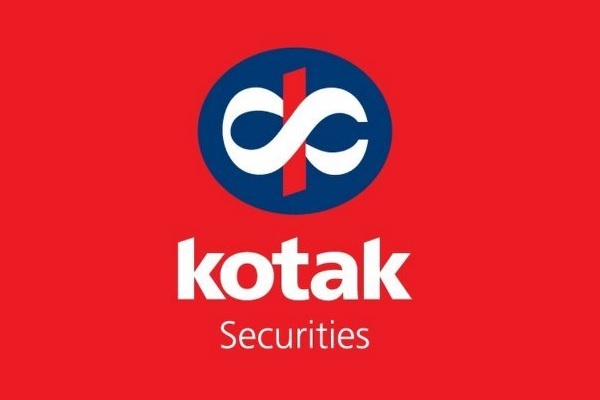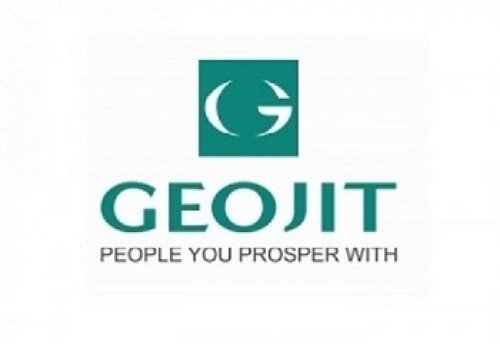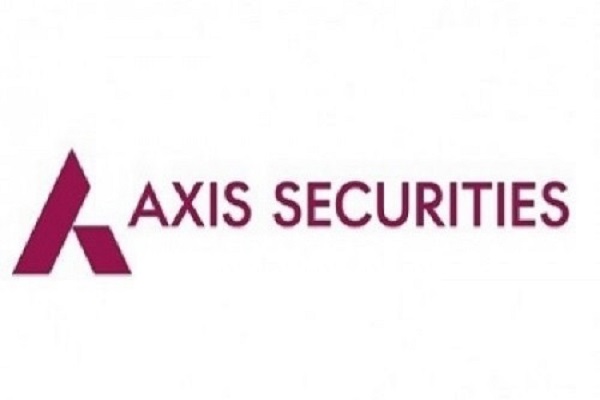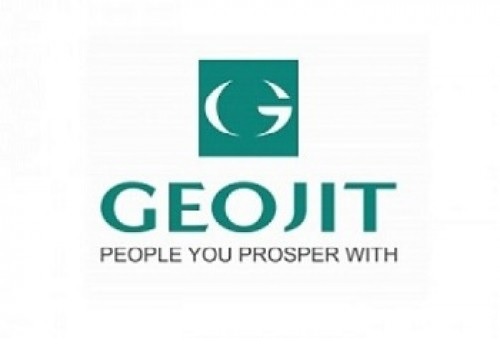Gold trading range for the day is 96755-98605 - Kedia Advisory

Gold
Gold surged by 1.17% to close at 97,818 as escalating global trade tensions and renewed safe-haven demand underpinned buying interest. President Donald Trump’s aggressive tariff moves—including a fresh 35% levy on Canadian imports from August 1 and plans for 15–20% blanket duties on most other trade partners—fueled investor anxiety over global growth and inflation. This was compounded by his push for a dramatic 300 bps cut in the Fed funds rate, which stirred speculation about a dovish tilt in US monetary policy and raised concerns about longer-term inflation risks. On the macro front, the US labor market remains resilient, with initial jobless claims dropping for the fourth consecutive week and reinforcing optimism after a robust non-farm payrolls report. Despite this, markets still price in two rate cuts this year, although expectations for an imminent cut at the next meeting remain muted. Physical demand, however, stayed subdued in Asia due to high prices and seasonal weakness, with Chinese premiums steady at $10–$25 an ounce and Indian discounts narrowing to $8 per ounce amid tight local supply and low imports in May and June. Typically, India’s gold demand softens during the monsoon season, while premiums in Hong Kong and Singapore hovered at modest levels. Technically, the market is under fresh buying with open interest rising by 4.17% to 12,456 and prices gaining 1,127. Immediate support is pegged at 97,285, with further downside risk to 96,755 if breached, while resistance is seen at 98,210 and a breakout could push prices towards 98,605.
Trading Ideas:
* Gold trading range for the day is 96755-98605.
* Gold rose as safe-haven demand strengthened amid Trump’s escalating global trade tariff threats.
* Trump announced a 35% tariff on Canadian imports starting August 1 to pressure trade partners.
* Initial US jobless claims fell for a fourth week, signaling continued labor market strength.
Silver
Silver jumped sharply by 3.55% to settle at 113,001, driven by strong safe-haven buying amid escalating global trade tensions. The surge followed President Donald Trump’s aggressive new tariff measures, including a 35% levy on Canadian imports starting August 1 and plans for blanket tariffs of 15%–20% on other major trading partners. These come on top of earlier 50% tariffs imposed on copper and Brazilian goods, alongside fresh tariff notifications for countries like Japan and South Korea. While heightened geopolitical risk supported silver’s bullish momentum, a firmer US dollar capped additional gains as investors weighed the Federal Reserve’s policy outlook. Comments from Chicago Fed President Austan Goolsbee reinforced the Fed’s focus on employment and inflation rather than debt costs, hinting at steady rates in the near term. On the investment front, robust silver ETP inflows continue to highlight strong investor conviction, with net additions of 95 Moz in the first half of 2025 already surpassing last year’s total. By end-June, global ETP holdings stood at 1.13 Boz, just 7% below their all-time high. Retail investment demand remains resilient in Europe and India, with Indian retail interest up 7% year-on-year in the first half, even as high domestic prices weigh on jewelry and silverware demand. Technically, silver is witnessing fresh buying interest, with open interest soaring by 27.86% to 22,698 as prices gained 3,878. Immediate support lies at 110,520, with deeper support at 108,040. On the upside, resistance is seen at 114,295, and a breakout could push prices toward 115,590.
Trading Ideas:
* Silver trading range for the day is 108040-115590.
* Silver prices surged to an all-time high of 1,13,111 on MCX amid trade tensions.
* Global safe-haven demand spiked after Trump imposed a 35% tariff on Canadian imports.
* The US announced blanket tariffs of 15%–20% on most remaining global trading partners.
Crude oil
Crude oil prices climbed 2.85% to settle at 5,881 as investors balanced signs of short-term tightness with a longer-term surplus outlook flagged by major forecasting agencies. The IEA noted that while refinery runs are peaking this summer to meet robust travel and power generation demand, its revised forecast points to supply growth outpacing demand growth for 2025—suggesting an eventual surplus. Meanwhile, Russia’s commitment to compensate for its OPEC+ overproduction during August–September is lending additional support to near-term prices. Adding to signs of solid prompt demand, Saudi Arabia is poised to ship around 51 million barrels to China in August, the largest monthly volume in over two years. On the supply side, the EIA’s latest data painted a mixed picture. U.S. crude stocks unexpectedly surged by 7.1 million barrels last week to 426 million barrels, defying forecasts of a draw, with stocks at Cushing also rising slightly. However, gasoline inventories dropped by 2.7 million barrels, deeper than expected, while distillate stocks fell by 825,000 barrels, indicating healthy downstream demand amid high refinery utilization rates. Net U.S. crude imports also dropped significantly by 1.36 million barrels per day. Technically, the market is under short covering, highlighted by a 5.43% drop in open interest to 9,883 contracts as prices rose by 163. Crude oil is now getting immediate support at 5,769; a break below could push prices toward 5,656. Resistance is pegged at 5,942, with further strength likely to test 6,002.
Trading Ideas:
* Crudeoil trading range for the day is 5656-6002.
* Crude oil rose as traders balanced tight prompt supply against IEA’s large surplus forecast.
* Russia’s Novak confirmed plans to offset overproduction by August–September to meet OPEC+ quota.
* IEA describes tight market despite flagging surplus for 2025
Natural gas
Natural gas prices edged up by 0.14% to settle at 285.9, supported by a smaller-than-expected storage build, strong LNG export flows, and forecasts for hotter-than-average weather across the Lower 48 U.S. states through late July. U.S. utilities injected 53 bcf into storage for the week ending July 4, matching the five-year seasonal average but falling short of market expectations for a higher build, reinforcing tightness in near-term supply. Total inventories now stand at 3.006 tcf, about 6.1% above the five-year average, offering a comfortable buffer as peak summer cooling demand kicks in. Production trends remain steady overall but show short-term fluctuations. Average gas output in the Lower 48 has ticked up to 106.7 bcfd so far this month, slightly above June’s record high, though daily output dipped to a four-week low of 105.1 bcfd due to maintenance and unplanned outages. Meanwhile, average flows to LNG export facilities rose to 15.6 bcfd in early July, recovering from maintenance-related dips in June, and are expected to stay strong amid robust international demand. The EIA projects both production and consumption to reach new records in 2025, forecasting dry gas output to rise to 105.9 bcfd and LNG exports to hit 14.6 bcfd next year, increasing further to 16.0 bcfd by 2026. On the technical front, the market is showing signs of short covering, with open interest falling by 12.05% to 26,022 as prices nudged higher by 0.4. Immediate support lies at 282.4, with deeper support seen at 278.9. Resistance is pegged at 291.4, and a move above this could open the door to test 296.9 in the near term.
Trading Ideas:
* Naturalgas trading range for the day is 278.9-296.9.
* Natural gas climbed after a smaller-than-expected storage build signaled tighter supply than anticipated
* The U.S. EIA said energy firms added 53 billion cubic feet of gas into storage during the week ended July 4.
* Rising gas flows to US LNG export plants supported prices amid recovering liquefaction operations.
Copper
Copper prices slipped by 0.25% to close at 883.55, easing after an initial spike triggered by the U.S. administration’s surprise announcement of a hefty 50% import tariff on copper, set to take effect from August 1. This tariff aims to protect and stimulate domestic production critical for the defense, electronics, and auto sectors but has temporarily dampened sentiment as traders digest its broader implications. On the supply side, Shanghai Exchange (SHFE) copper inventories declined by 3.7% week-on-week, pointing to firm underlying demand in China. A positive surprise came from a private survey showing Chinese manufacturing activity bounced back to growth in June, signaling that the world’s top copper consumer may benefit from slightly easing trade tensions. According to the International Copper Study Group, the global refined copper market shifted to a 50,000 metric ton deficit in April after posting a surplus in March, driven by steady consumption outpacing output. Notably, when adjusted for Chinese bonded warehouse changes, the deficit stood at 43,000 tons. Meanwhile, China’s copper concentrate imports fell 18% in May compared to April’s record levels, but were up 5.8% year-on-year, with year-to-date concentrate imports up 7.4%—highlighting solid demand despite trade-related uncertainties. Technically, the market is experiencing long liquidation, as reflected by a 5.05% drop in open interest to 7,258 while prices edged lower by 2.25. Copper now finds immediate support at 880, with a breach below this likely to test 876.4. On the upside, resistance is seen at 887.2, and a move above that could push prices towards 890.8.
Trading Ideas:
* Copper trading range for the day is 876.4-890.8.
* Copper prices eased after initial spike on Trump’s 50% US import tariff announcement.
* Copper inventories in warehouses monitored by the Shanghai Futures Exchange dropped 3.7% from last Friday.
* ICSG: April global refined copper market flipped to a 50,000 metric ton deficit
Zinc
Zinc prices fell by 0.84% to close at 258.6, weighed down by renewed concerns over demand growth as escalating U.S. trade tensions add to an already uncertain global outlook. President Donald Trump’s decision to impose new tariffs ranging from 25% to 40% on 14 countries effective August 1, alongside the threat of an additional 10% tariff on BRICS nations, has injected fresh volatility into metals markets, raising fears of slower industrial activity and trade flows. On the supply side, the global zinc market balance continues to tighten gradually. According to the International Lead and Zinc Study Group, the global surplus narrowed to 16,000 metric tons in April from 23,400 tons in March, driven partly by production constraints and declining mined output from major sources. For example, Teck Resources’ Red Dog Mine in Alaska, the world’s largest zinc mine, saw output drop 20% year-on-year in Q1, while Australian smelter Nyrstar plans to cut production by 25% in response to uncompetitive treatment charges amid ore shortages. However, downside pressure persists as Chinese manufacturing demand remains weak. SHFE zinc inventories rose sharply by 10.2% from last week, signaling tepid spot buying as buyers limit purchases to immediate needs. Technically, the zinc market is seeing long liquidation, with open interest plunging by 20.04% to 2,633 lots as traders reduce positions amid price softness. Zinc has immediate support at 257.2, with deeper support at 255.7 if selling persists. Resistance is now likely at 261.1, and a breakout above this could see prices retest the 263.5 mark in the coming sessions.
Trading Ideas:
* Zinc trading range for the day is 255.7-263.5.
* Zinc dropped amid worries about economic slowdown and demand growth caused by Trump’s tariffs.
* Zinc inventories in warehouses monitored by the Shanghai Futures Exchange rose 10.20% from last Friday
* Production at some smelters in South China was affected by heavy rain.
Aluminium
Aluminium prices closed unchanged at 249.75 as the market balanced mixed signals from both supply and demand fundamentals. On the supply side, China’s primary aluminium output for June fell by 3.23% month-on-month, a modest retreat that signals some supply tightening after months of robust production. However, this was offset by broader data showing China’s May output rose 5% year-on-year to 3.83 million metric tons, with year-to-date production up 4% from last year at 18.59 million tons—highlighting that overall supply remains healthy. In addition, LME aluminium inventories have climbed sharply by 47,450 tons since June 25 to reach 384,350 tons, reversing the cash premium to a discount and pointing to adequate global availability. Similarly, SHFE-monitored warehouses reported a 9.1% weekly increase in stocks, further confirming sufficient domestic supply. Meanwhile, Japan’s aluminium market reflects a softer trend, with Q3 shipment premiums falling 41% from the previous quarter to $108 per ton amid weak demand and steady supply. Japanese port stocks also rose 3.3% at the end of May, adding to the oversupply narrative. Globally, primary aluminium output in May rose 1.5% year-on-year to 6.245 million tonnes, data from the International Aluminium Institute showed. Technically, the aluminium market shows signs of long liquidation as open interest dropped by 7.73% to 3,269 contracts, while prices stayed flat. This hints at traders closing positions amid lack of strong directional cues. Aluminium now finds support at 248.9, with further downside risk towards 247.8 if selling picks up. On the upside, resistance is seen at 250.5, and a move above that could push prices to test 251 in the near term.
Trading Ideas:
* Aluminium trading range for the day is 247.8-251.
* Aluminium prices fell as Shanghai Futures Exchange inventories rose sharply by 9.1% week-on-week.
* China’s June aluminium production slipped 3.23% month-on-month, but annual output remains higher overall.
* Global primary aluminium output rose 1.5% year-on-year in May to 6.245 million tonnes, IAI said.
Cottoncandy
Cottoncandy prices rebounded by 1.82% to close at 55,950, driven by short covering after recent declines sparked by higher domestic production estimates. The Cotton Association of India (CAI) marginally raised India’s 2024–25 production forecast to 291.35 lakh bales, citing better output in Odisha. However, bearish undertones remain as CAI lowered its cotton consumption estimate by 8 lakh bales to 307 lakh bales and trimmed its export forecast by 1 lakh bale to 15 lakh bales, signaling weaker domestic and overseas demand. Notably, India’s cotton exports are expected to drop sharply by over 13 lakh bales compared to last year, while imports have already more than doubled year-on-year, putting further pressure on domestic prices. On the global front, the latest USDA WASDE report offered some supportive cues. It revised down the world cotton production for the 2025–26 season by over 800,000 bales, with significant cuts for India, the US, and Pakistan outweighing an increase for China. Global consumption was trimmed by 300,000 bales, while global ending stocks are projected to decline by nearly 1.6 million bales due to lower beginning stocks and a bigger cut in production than consumption. For the US, adverse weather in the Delta has lowered the harvested area and yield forecast, pushing production to its second lowest in a decade. Technically, Cottoncandy indicate fresh buying interest with open interest up by 6.25% to 68 contracts, alongside a 1,000 price gain. Immediate support lies at 55,050, and a break below could push prices to 54,150. On the upside, resistance is seen at 56,750, with a potential test of 57,550 if momentum continues.
Trading Ideas:
* Cottoncandy trading range for the day is 54150-57550.
* Cotton gained on short covering after prices dropped amid slight upward revision in India’s output estimate.
* CAI cut consumption forecast by 8 lakh bales to 307 lakh for the 2024–25 season.
* Cotton exports expected to fall to 15 lakh bales, down 13.36 lakh from last year.
* In Rajkot, a major spot market, the price ended at 26885.8 Rupees dropped by -0.38 percent.
Turmeric
Turmeric edged higher by 0.66% to close at 13,512, recovering on short covering after earlier pressure from expectations of increased acreage due to favourable rains. Fresh arrivals rose to 13,660 quintals compared to 11,940 quintals in the prior session, suggesting a slight improvement in market availability. However, despite the likely expansion of turmeric acreage by 15–20% this season—driven by relatively lower profitability of other crops—production gains may be limited. Untimely rains could hamper productivity, with early estimates pointing to a 10–15% decline in new crop yields, especially in regions like Nanded where small rhizomes and crop rots are evident. Market activity remains resilient, supported by steady fresh crop arrivals at Duggirala, where better-quality produce continues to command a premium over older stock. Daily trade volumes are healthy at around 1,000–1,200 bags, and nearly 50–55% of the total new crop has already been traded. This indicates firm underlying demand even as the harvest season nears its end. On the export front, India shipped about 14,956 tonnes of turmeric in April 2025, up 6% year-on-year but slightly down from March. Technically, turmeric reflect mild short covering, with open interest down by 0.79% to 17,670 while prices rose by 88. The immediate support for turmeric lies at 13,378, and a breach could see prices test 13,244. On the higher side, resistance is expected near 13,588, with further upside potential towards 13,664 if momentum sustains.
Trading Ideas:
* Turmeric trading range for the day is 13244-13664.
* Turmeric gains on short covering after prices dropped due to expected increase in acreage
* Turmeric acreage is expected to increase by 15-20% this season, supported by low competitive crop prices.
* In April 2025 around 14,956.80 tonnes were exported as against 14,109.10 tonnes in April 2024 showing a rise of 6%.
* In Nizamabad, a major spot market, the price ended at 14084.45 Rupees gained by 0.05 percent.
Jeera
Jeera declined by 1.94% to close at 19,700 amid weak domestic and export demand following the end of the peak retail season. Traders pointed to subdued buying interest both domestically and internationally, despite earlier support from geopolitical supply risks in producing countries like Syria, Turkey, and Afghanistan. With these supply-side risks now easing, and ample domestic stocks available, sentiment turned bearish. Current estimates suggest farmers are holding about 20 lakh bags of cumin, but only 3–4 lakh bags are likely to be traded before the season ends, leaving an estimated carry-forward stock of around 16 lakh bags—indicating comfortable supply levels. Although India’s jeera production for the season is expected to drop to about 90–92 lakh bags, down from last year’s 1.10 crore bags, the impact of lower output is offset by sluggish export activity and existing inventory. Gujarat’s production is pegged at 42–45 lakh bags and Rajasthan’s at 48–50 lakh bags. Internationally, China’s production forecast has been trimmed to 70–80 thousand tonnes due to adverse weather, while Syria, Turkey, and Afghanistan are each likely to contribute modestly to global supply. Technically, the market is under fresh selling pressure as open interest rose by 3.51% to 4,692 while prices dropped by 390. Immediate support for Jeera is at 19,510, with a break lower likely to test 19,330. On the upside, resistance is seen at 20,010, and a close above this could push prices towards 20,330.
Trading Ideas:
* Jeera trading range for the day is 19330-20330.
* Jeera dropped due to weak domestic and export demand post retail season.
* However downside seen limited on strong export demand and easing geopolitical concerns.
* Total arrivals witnessed a marginal increase to 12,000 bags (55 kg each) as against 11,800 bags on the previous day.
* In Unjha, a major spot market, the price ended at 20365.25 Rupees dropped by -0.06 percent.
Views express by all participants are for information & academic purpose only. Kindly read disclaimer before referring below views


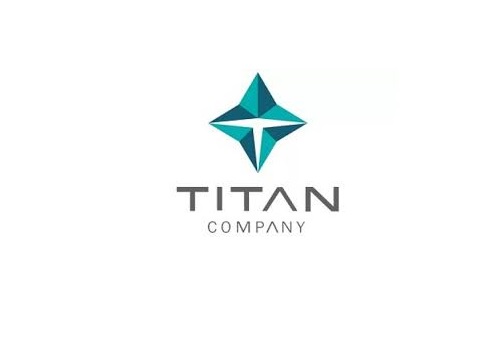
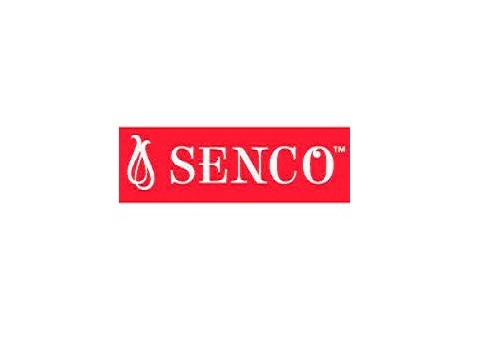



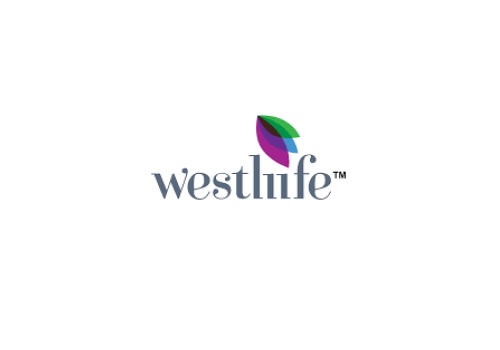


Tag News

Silver Near $80 on Supply Tightness, Rate-Cut Bets by Amit Gupta, Kedia Advisory
